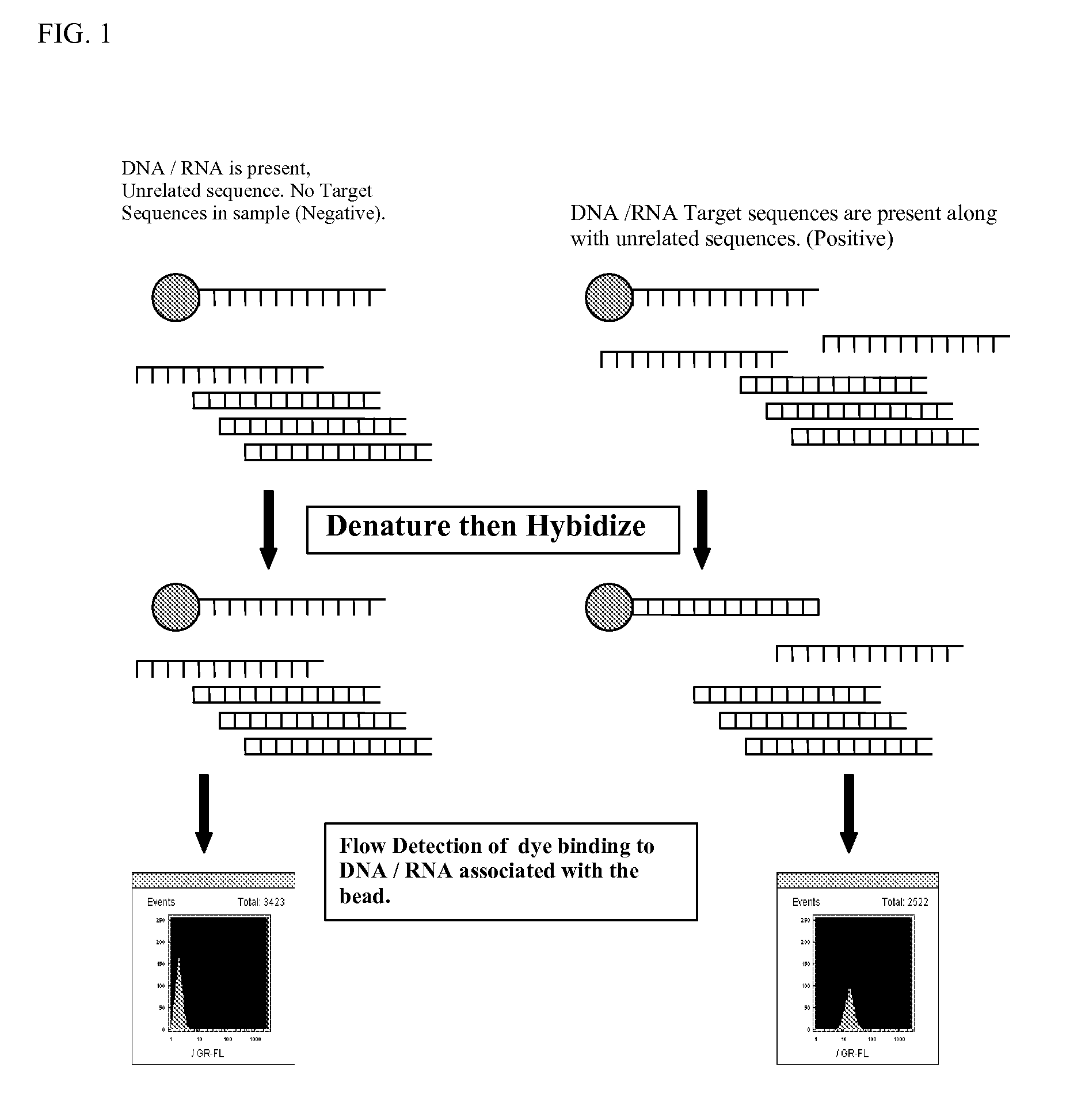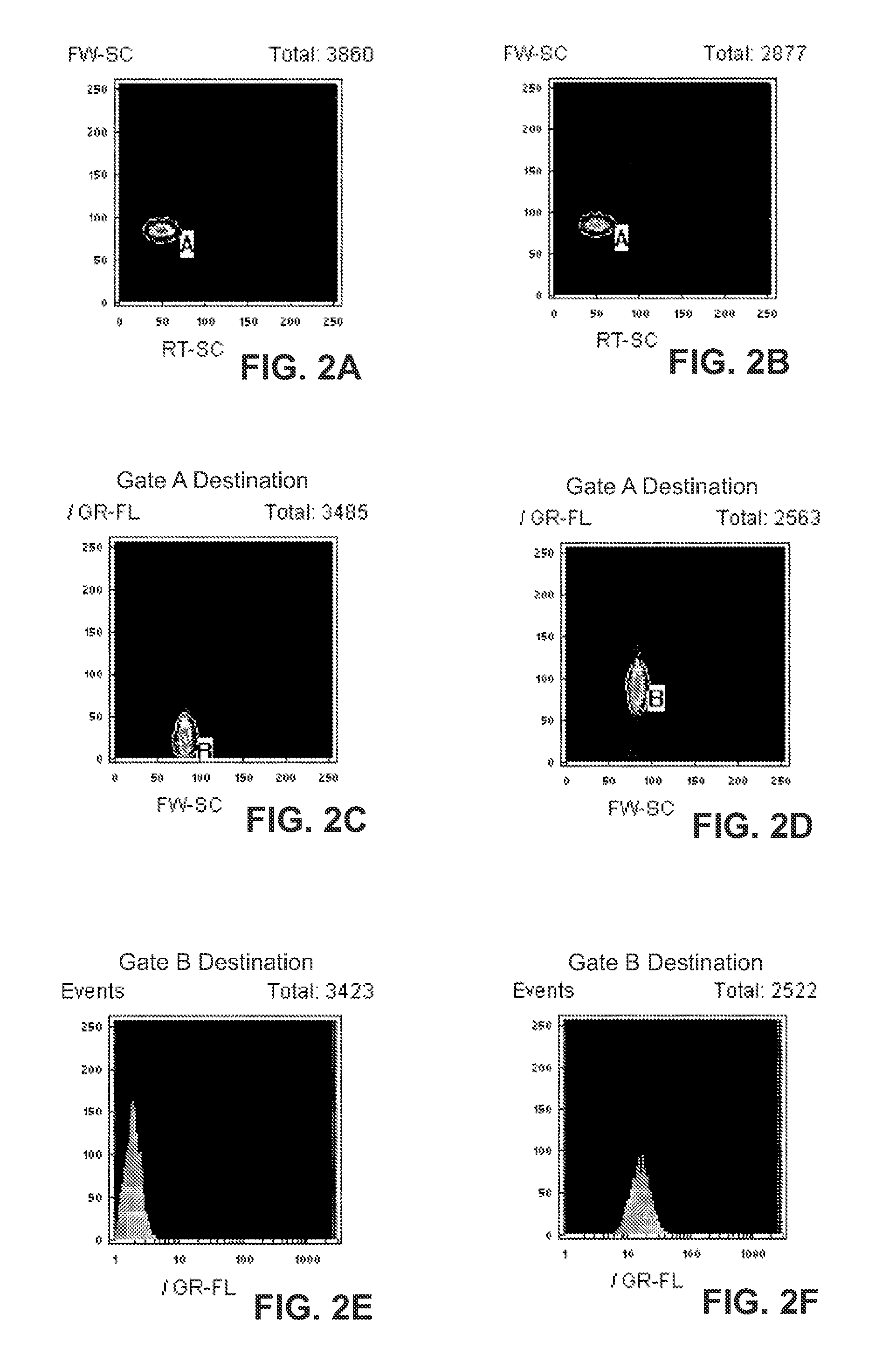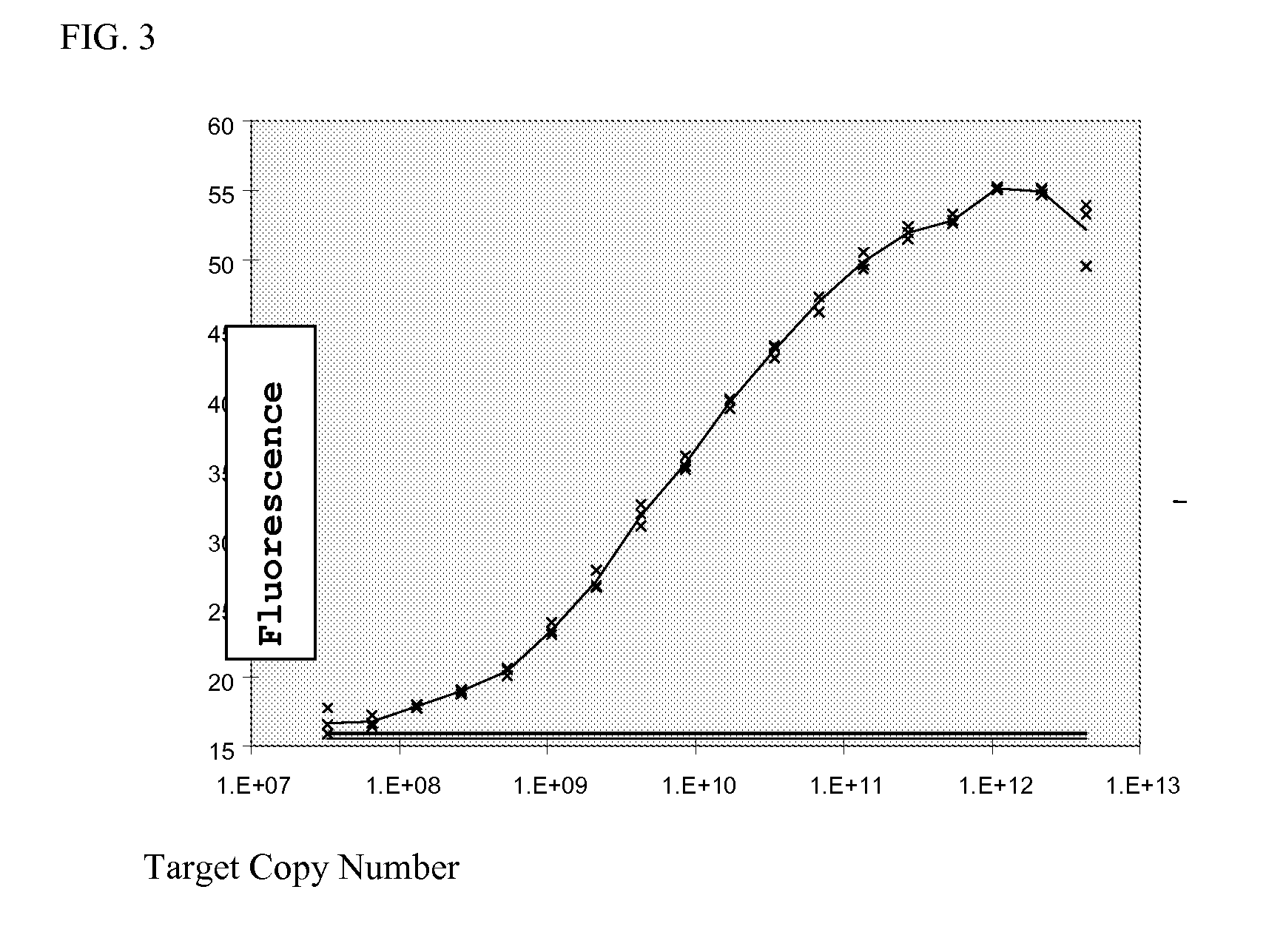Nucleic acid-based authentication codes
a technology of nucleic acid and product authentication, applied in the field of nucleic acid based product authentication, can solve the problems of increasing the cost of methods, increasing the cost, and decreasing the practicality of methods, and enhancing the sensitivity of all assays performed
- Summary
- Abstract
- Description
- Claims
- Application Information
AI Technical Summary
Benefits of technology
Problems solved by technology
Method used
Image
Examples
example 1
Detection of Target DNA Hybridized to Particle-Immobilized Oligonucleotide
DNA Binding Fluorophores
[0120]Fluorophores that bind to dsDNA were used to detect hybridized target DNA. The target DNA in this example (SEQ ID NO:2) was hybridized to bead-immobilized probe (SEQ ID NO:1) in the presence of excess calf thymus DNA. Fluorophore was combined with hybridized target-bead suspension and analyzed by flow cytometry. Results are illustrated in FIGS. 2A-F using thiazole orange as the dsDNA binding fluorophore. The forward-angle scattering (FW-SC)×right-angle scattering (RT-SC) pattern of beads incubated with 1 μg calf thymus DNA in the absence (FIG. 2A) and presence (FIG. 2B) of target DNA is shown. Light-scatter gating of the beads by means of an image analysis software algorithm allows the analysis of select particles within a narrow range of FW-SC×RT-SC values, thus, eliminating particles outside the size range. The gated group of particles has the FW-SC×Green Fluorescence (GR-FL) pa...
example 2
Nuclease Protection
[0122]Hybridization of biotinylated particle-immobilized oligonucleotide probes (Oligo-1A) to target oligonucleotide (SEQ ID:2) protected the probe from hydrolysis by single strand specific DNA endonuclease. As in Example 1, particle-immobilized oligonucleotide and CTDNA were incubated together in the presence and absence of 1000 femtomoles of target DNA, followed by incubation with 51 nuclease. Biotin was released upon endonuclease hydrolysis of the oligonucleotide probe unless it was protected from hydrolysis by hybridization with target DNA.
[0123]An 8 microliter aliquot of streptavidin-linked fluorophore (streptavidin-phycoerythrin from Molecular Probes), diluted 1:10 in TE buffer, was added to 16 microliters of nuclease-treated sample, and incubated for 10 minutes at room temperature. Binding of streptavidin-linked fluorophore served as reporter for intact bead-linked oligonucleotide. The mixture was analyzed using flow cytometry. The mean channel fluorescence...
example 3
Quantification of Target DNA
DNA Binding Fluorophore
[0124]The fluorescence of the fluorophore, sybr green, bound to the hybrid of target DNA (SEQ ID NO:2) and bead-immobilized oligonucleotide (SEQ ID NO:1) is shown as a function of the copy number of the target in FIG. 3.
[0125]The fluorescence signal associated with bead-immobilized oligonucleotide is monotonically dependent on the concentration, demonstrating the ability to quantitatively determine the amount of target DNA over a concentration range of about 6 orders of magnitude. As little as 25.7 picograms of target dsDNA corresponding to 440 attomoles, or about 2.5×108 copies of the 90-mer target, was clearly detected in a background of 0.8 μg non-specific calf thymus DNA. Thus the target DNA was readily detectable in the presence of about a 3.11×104-fold excess of non-specific DNA. The results also show that the method is very sensitive over the concentration range; a two-fold increase in target DNA concentration was readily det...
PUM
| Property | Measurement | Unit |
|---|---|---|
| wavelength | aaaaa | aaaaa |
| diameter | aaaaa | aaaaa |
| size | aaaaa | aaaaa |
Abstract
Description
Claims
Application Information
 Login to View More
Login to View More - R&D
- Intellectual Property
- Life Sciences
- Materials
- Tech Scout
- Unparalleled Data Quality
- Higher Quality Content
- 60% Fewer Hallucinations
Browse by: Latest US Patents, China's latest patents, Technical Efficacy Thesaurus, Application Domain, Technology Topic, Popular Technical Reports.
© 2025 PatSnap. All rights reserved.Legal|Privacy policy|Modern Slavery Act Transparency Statement|Sitemap|About US| Contact US: help@patsnap.com



